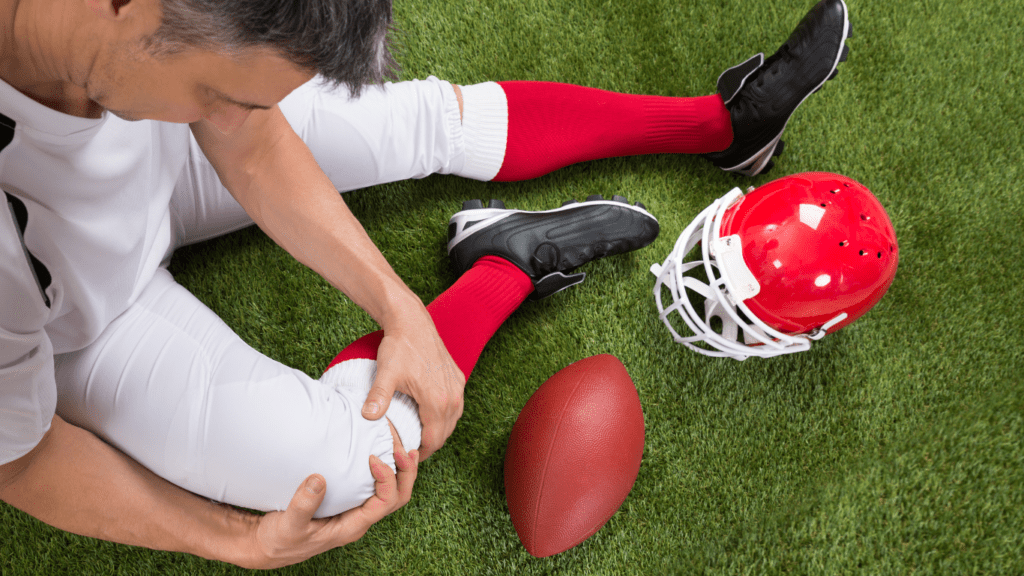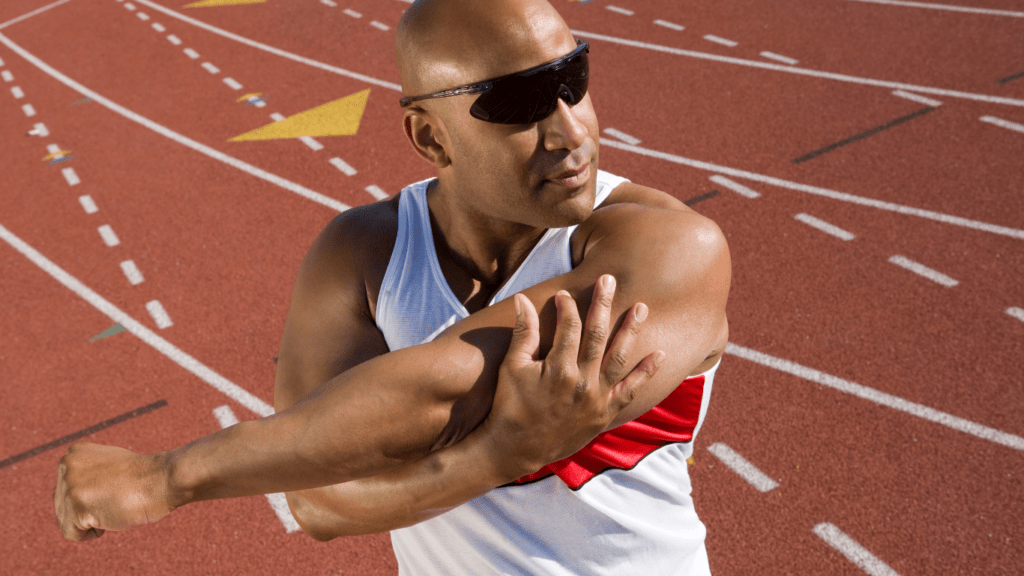Sports are thrilling, but let’s face it—injuries can quickly sideline even the most dedicated athletes. From sprained ankles to overuse injuries, these setbacks are not only painful but can also derail progress and confidence. The good news? Most common sports injuries are preventable with the right strategies and awareness.
Understanding Common Sports Injuries
Athletes across all levels often experience injuries that can disrupt their performance. Identifying the most common injuries and their causes helps in reducing risk and maintaining physical health.
Most Frequently Occurring Injuries
Several injuries appear more commonly in sports. Sprains, especially in the ankles, result from overstretching or tearing ligaments. Strains, affecting muscles or tendons, frequently occur from overexertion or improper warm-ups. Concussions, prevalent in contact sports like football, happen due to impacts causing brain trauma. Stress fractures, often seen in runners, develop from repetitive force on bones. Tendinitis, such as tennis elbow, results from overuse and inflammation of tendons.
Causes Behind Sports Injuries
Specific factors contribute to sports injuries. Poor technique during movements or exercises increases strain on muscles and joints. Inadequate warm-ups or skipping stretching leads to reduced flexibility, heightening the chance of strains. Overtraining, whether through excessive frequency or intensity, overwhelms the body and results in stress injuries like fractures or inflammation. Using inappropriate or worn-out equipment, such as shoes lacking proper support, often triggers injuries.
Importance Of Injury Prevention
Effective injury prevention reduces risks and promotes consistent athletic performance. It establishes a foundation for athletes and coaches to achieve long-term success.
Benefits For Athletes
- Injury prevention enhances athletes’ physical health by minimizing downtime caused by injuries.
- Consistent training schedules improve skill development and overall fitness levels.
- Implementing preventive measures, like sufficient warm-ups and proper techniques, reduces the frequency of injuries such as sprains and strains.
- Athletes also gain confidence when performance isn’t interrupted by preventable setbacks. For example, maintaining strong muscles and using proper footwear lowers the risk of ankle-related injuries.
Long-Term Impact On Careers
Preventing injuries preserves athletes’ longevity in their respective sports. A history of injuries, such as repetitive stress fractures or tendinitis, often leads to chronic issues that diminish future performance. Avoiding overtraining and practicing self-care ensures sustained participation without early career termination. Coaches, by emphasizing injury prevention, help extend athletes’ professional opportunities and guard against severe injuries like concussions that could have long-term health consequences.
Expert Tips For Athletes

Injury prevention relies on proactive strategies and informed practices. Adopting these expert-recommended approaches enhances both safety and performance.
Warm-Up And Cool-Down Strategies
Preparing the body before and after exercise reduces injury risks. Warm-ups should include dynamic movements like leg swings and arm circles to increase blood flow. This improves joint mobility and muscle elasticity. Cool-downs involve stretching major muscle groups, such as hamstrings and quads, to aid recovery and prevent stiffness. Skipping these steps weakens the body’s ability to handle physical demands, increasing the likelihood of strains.
Strength And Flexibility Training
Balanced strength training protects muscles and joints during sports. Targeting muscle groups with exercises like:
- squats
- lunges
- planks
builds stability and reduces imbalance-related injuries. Flexibility training through yoga or static stretching enhances range of motion, preventing strains. Overlooking either component can lead to stresses on ligaments and increased injury susceptibility.
Proper Use Of Equipment
Appropriately fitted and maintained equipment plays a critical role in injury prevention. For example, well-cushioned running shoes reduce impact on knees and ankles, while properly adjusted helmets in cycling and contact sports protect against head injuries. Inspect equipment regularly for wear and replace it as necessary. Faulty gear compromises safety and heightens injury risks.
Guidance For Coaches
Coaches play a critical role in minimizing sports injuries by implementing structured prevention strategies and fostering safe training environments. By emphasizing preparation, observation, and education, I ensure my athletes stay healthy and perform at their best.
Developing Prevention Plans
Comprehensive injury prevention plans reduce risks by addressing specific needs. I assess my athletes’ fitness levels, identify potential weaknesses, and create training schedules that incorporate rest, conditioning, and cross-training. For example, establishing recovery periods after high-intensity sessions prevents overtraining. I also coordinate with athletic trainers to develop individualized plans when dealing with athletes who have a history of injuries.
Recognizing Early Warning Signs
Identifying signs of overuse or strain helps avoid more severe injuries. I pay close attention to changes in my athletes’ form, fatigue levels, and discomfort reports. For instance, limping or frequent muscle tightness may indicate an underlying issue. Encouraging athletes to report even minor soreness ensures early intervention, preventing long-term damage. I routinely check in with them to foster open communication about their physical state.
Promoting Proper Techniques
Ensuring proper techniques in training and competition minimizes injury risks caused by poor form or unnecessary strain. I devote time to teaching correct movement patterns, such as landing mechanics for jump-based sports or arm positioning in throwing activities. Regular form evaluations help me correct errors early. I also emphasize sport-specific biomechanics to enhance safety and support overall performance.
Role Of Nutrition And Hydration
Proper nutrition and hydration directly influence athletic performance and injury prevention. Through intentional dietary choices and consistent fluid intake, athletes can enhance recovery, maintain energy levels, and reduce the risk of injuries.
Essential Nutritional Practices
Balanced diets provide the foundation for energy, muscle repair, and overall health. I advise athletes to include macronutrients—carbohydrates, proteins, and fats—in appropriate ratios for their sport. Carbohydrates serve as the primary energy source, while proteins are essential for muscle recovery and repair. Healthy fats support joint health and long-term energy needs. For example, whole grains, lean meats, and avocados can provide these macronutrients effectively.
Micronutrients also play a pivotal role in injury prevention. Calcium and vitamin D strengthen bones, minimizing the risk of stress fractures, while magnesium and potassium support muscle function, reducing cramps and spasms. Incorporating dairy, leafy greens, and bananas ensures these nutrients are adequately consumed.
Timely meals and snacks improve performance and recovery. I encourage athletes to eat a carbohydrate-rich meal 3-4 hours before training and refuel with a protein and carb combination, like a protein shake with fruit, within 30 minutes post-workout. This timing aids muscle glycogen replenishment and repair.
Importance Of Staying Hydrated
Adequate hydration reduces fatigue and the potential for cramps or heat-related illnesses. Athletes lose fluids through sweat during physical activity, which affects performance and increases injury risk. Replacing these fluids is crucial for maintaining physical and cognitive function.
Water remains primary, but electrolytes are essential for prolonged activities. I suggest replacing sodium, potassium, and chloride lost during intense training with sports drinks or electrolyte supplements. For sessions lasting under one hour, water usually suffices. For longer durations or in extreme heat, options like electrolyte-infused beverages work best.
Monitoring hydration helps prevent deficiencies. I find that checking urine color or weighing before and after training indicates hydration levels. Drinking 16-20 ounces of fluid two hours before exercise and continuing every 15-20 minutes during activity ensures proper intake. Recovery hydration should match lost body weight at a 1.5:1 ratio, accounting for sweat losses.



 Founder & Head Performance Strategist
Founder & Head Performance Strategist
